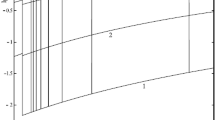Abstract
As for the 5′ × 4′(∼llpc × 9pc) region centered at W51 lRSl the observations of the 3.4 mm continuum, CO (J = 1-0) line and simultaneous NH3(1,1), (2,2), (3,3), (4,4) inverse lines were made for studying the massive star formation region located in the main spiral arms of the Galaxy. In the directions of W51 IRS1, IRS2 and el/e2 in 3.4 mm continuum, analyses of the line profiles show that the absorption lines of ammonia, which arise from the gas in front of the HII region, are red-shifted with respect to the emission lines, which arise from the surrounding cloud. Furthermore, a radiation transfer and statistical equilibrium calculation of ammonia molecules show that the densities increase by 3–10 times from the eastern border to the center. These points hint that the collapse is happening in the molecular cloud core obscured in optical wavelengths. The effects of the radiation fields from radio, infrared and UCHII sources is non-negligible on the excitation of various molecules (e.g. NH3) within the circle of radius 40″ centered at IRS1. The profiles of the COJ = 1–0 line in the circle change from double peaks ( ∼ 60, ∼ 68 km. s-1) to triple peaks, i.e. the component ∼53 km·s−1, which associates with UCHII, also appears in the spectra. There are indications that the circle of radius 40″ centered at IRSI is a region of massive star forming activity
Similar content being viewed by others
References
Sievers, A. W., Mezger, P. G., Gordon, M. A. et al., Dust emission from star forming regions, A&A, 1991, 251: 231–244.
Rudolph, A., Welch, W. J., Palmer, P. et al., Dynamical collapse of the W51 star-forming region, Apj, 1990, 363: 528–546.
Zhang, Q., Ho, P. T. P., Dynamical collapse in W51 massive cores: NH3 observations, ApJ, 1997, 488: 241–257.
Zhang, Q., Ho, P. T. P., Ohashi, N., Dynamical collapse in W51 massive cores: CS(3-2) and CH3CN observations, ApJ, 1998, 494: 636–656.
Carpenter, J. M., Sanders, D. B., The W51 giant molecular cloud, AJ, 1998, 116: 1856–1867.
Zeng, Q., Rotation-inversion transition of interstellar ammonia, A&A, 1985, 149: 305–308.
Danby, G., Flower, D. R., Valimn, P. et al., A recalibration of the interstellar ammonia thermometer, MNRaS, 1988, 235: 229–238.
Author information
Authors and Affiliations
Corresponding author
Rights and permissions
About this article
Cite this article
Pei, C., Mao, R. & Zeng, Q. Molecular lines and continuum from W51A (I) —CO and NH3 spectra and 3 mm continuum. Sci. China Ser. A-Math. 44, 1209–1215 (2001). https://doi.org/10.1007/BF02877441
Received:
Issue Date:
DOI: https://doi.org/10.1007/BF02877441




